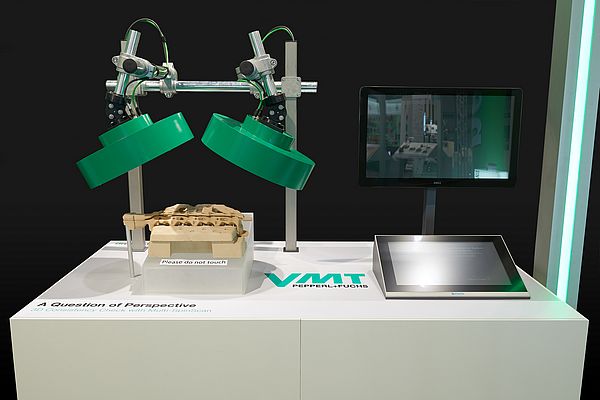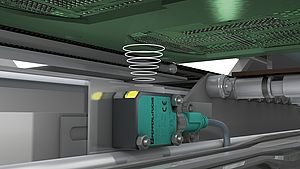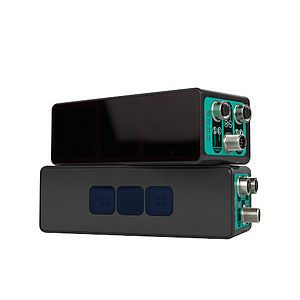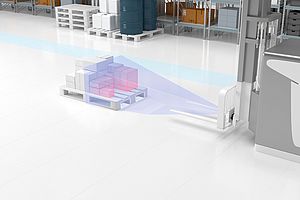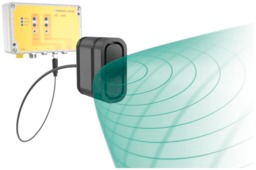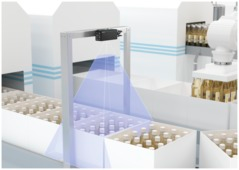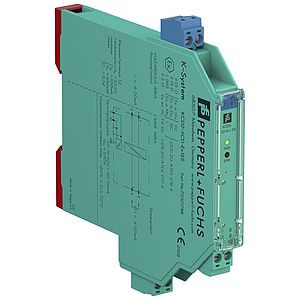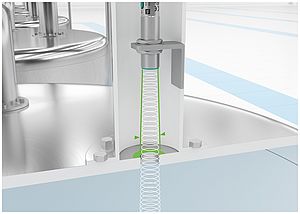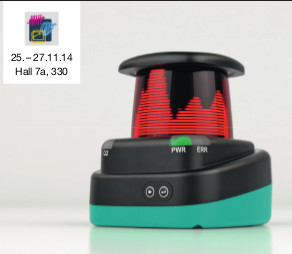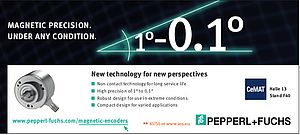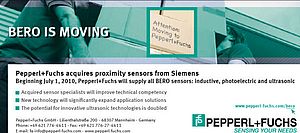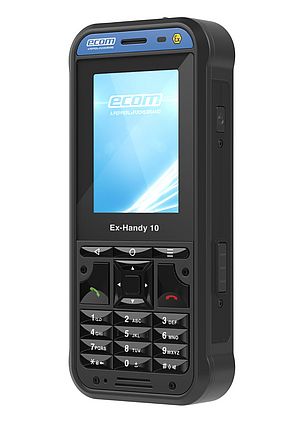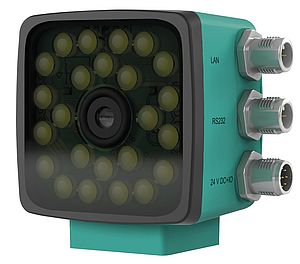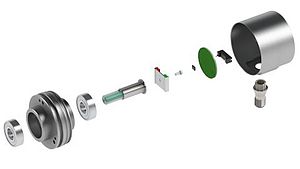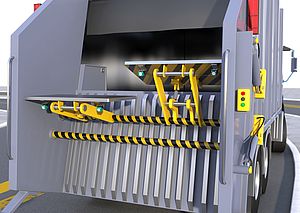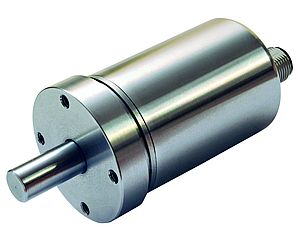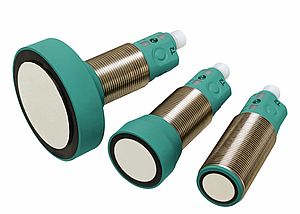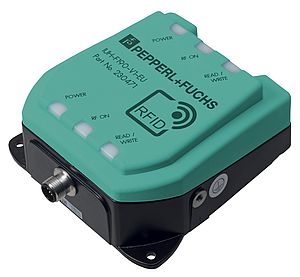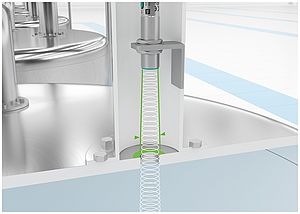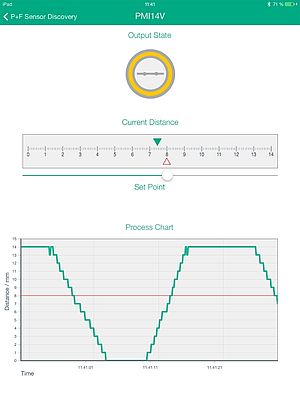Industry 4.0 refers to a networked world of production plants where data streams are the life blood that creates value. But where does the data come from and how does it benefit future-oriented production? After examining this question in detail, Pepperl+Fuchs has visualized the product and data flows in the exchange between the real world and the virtual world on a 3 x 4 meter video wall and a video floor of the same size.
This highlight exhibit has the look and feel of an outsize open laptop and vividly shows the path taken by the sensor data from the physical object through the data layer as an intermediate, into the virtual data world of the cloud. The video floor represents the tangible world of objects where vehicle bodies are transported or the conduits and valves of a chemical plant are shown. The interaction with these tangible objects triggers a corresponding data flow in the virtual world of the video wall. These provide the user with valuable additional information about the tangible objects or important supply and disposal processes that run in the background. The exhibit demonstrates one use case from the manufacturing industry and one from the process industry. The first case from the factory environment presents the configuration of customer-specific vehicles in the context of single-piece production. The second case from the process industry shows automated asset management for plant engineering. The data from process components out of the field is automatically recorded here and transferred to a cloud-based management system. Since the process components transfer static identification data alongside dynamic time-series data from their lifecycle, predictive maintenance management can also be visualized in addition to pure inventory management.
In addition to this highly visual highlight exhibit, use cases for related topics have been clearly illustrated in the adjacent Industry 4.0 Solutions Park. The exhibits represent functioning system configurations for asset management and predictive maintenance. The "Automated Asset Administration" exhibit, for example, shows an application from the manufacturing industry and the "IoT for Process Automation" exhibit presents a processing application from the process industry.
Automatic Inventory Management
In addition to the pure measurement or process data, modern sensors supply a variety of additional information that generally cannot be fully evaluated by classic machine control. The core task of the control panel is real-time-compatible processing of all control variables required for the process to guarantee that the machine functions smoothly and efficiently. However, the additional information from the smart components would significantly complicate the functional design of the machine. Another information processing strategy is available to ensure that the additional information from smart components can still be used efficiently. With this strategy, a retrofittable gateway opens up access to the lowest function level of sensors and actuators and transmits both type and instance data from the components to a data platform on the Internet. This data is accessed completely without reaction and without affecting the technical control function of the machine.
The "Automated Asset Administration" demonstrator was developed as part of a collaboration between Pepperl+Fuchs, Hilscher Gesellschaft für Systemautomation GmbH, and SAP SE. It shows how easy it is to connect the functionally independent sample machine to the data platform. This cloud platform records both type-related identification data—such as the manufacturer, item number, and device ID—and instance-related data, such as the current firmware version or function data from the component itself, which is saved as a time series over its lifecycle.
The identification data provides an electronic image of the machine or plant structure. This guarantees the data reconciliation between the installed hardware and the associated, digitally-stored parameter set, even when components are replaced. The advantage of this reconciliation is that, in addition to the automatic update of the machine or plant plan, the replacement component can also load its necessary documentation simultaneously in the background. This type of electronic check also enables impermissible replacement components to be identified. This approach safeguards the functional guarantee and also ensures safe operation of the plant over many years.
As well as recording the identification data, the protocol also restores the actual operating state of the machine based on process and status data. The operating states are monitored on the cloud platform and can therefore not only determine the maintenance required for the component, but also produce forecasts for future maintenance operations.
IoT for Process Automation
Unlike the manufacturing industry, various reasons mean that data bus systems have yet to be widely accepted in the process industry. As a result, many field devices—such as control valves or measuring instruments for flow, pressure, temperature, or similar measured values—are still connected via a 4 mA - 20 mA current loop in this type of processing plant.
This classic analog signal transmission between the master computer and the field device only supports a pure setpoint transfer for actuators or simple transmission of measured values for sensors. There is no bi-directional data exchange in the sense of true communication.
Nevertheless, most modern field devices today already have comprehensive intelligence on board, which could provide information about their identity or their operating state. Based on this additional information, valves can evaluate their own mechanical wear or flow-measuring instruments can detect corrosion and abrasion. Although the field devices used normally also support the digital HART protocol, most—particularly older plants—do not offer a suitable infrastructure for evaluating the HART signals. Many valuable information remains largely unused.
The "IoT for Process Automation" demonstrator shows how this gap of missing data communication can be closed. The solution lies in a parallel, radio-based communication channel that can provide the additional data in terms of the Internet of Things (IoT). The advantage of this new data channel is that it is completely reaction-free and involves no intervention in the existing process control.
From a purely technical perspective, the data channel is based on the WirelessHART technology. The field devices can therefore be easily retrofitted with the WirelessHART adapters called "Bullets". Together with the WirelessHART gateway, these form a wireless network between the individual stations. The special IoT Agent software is loaded onto the WirelessHART gateway and ensures the correct transmission of the device data to the cloud platform on the Internet. The gateway is configured using an intuitive application program that can run on a wide variety of operating systems.
The data provided in the cloud can be used by downstream IT applications. So, further "IoT services" enable options such as condition monitoring or predictive maintenance. However, inventory management, which is also extremely important for plant operation, is also supported by the asset management function.


